How does an author not only get their book published, but get their book shortlisted for the Best First Book award? We asked each of this year’s finalists how they went from unpublished amateur to finalist.
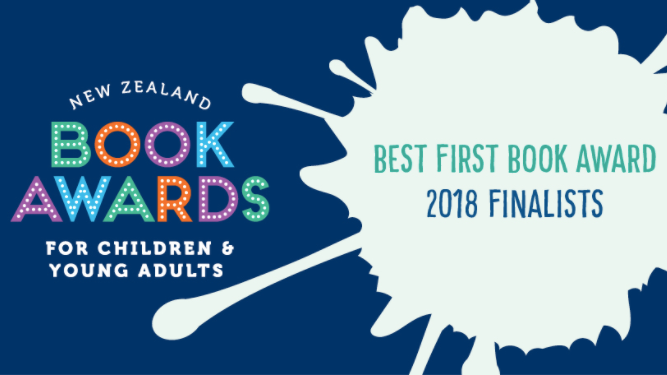
Eileen Merriman, finalist for Pieces of You (Penguin Random House)
Everyone always asks how I can possibly find time to write, but for me it’s a compulsion.
I stopped writing when I went to university and didn’t start again until almost twenty years and several exams later, when I had finally qualified as a haematologist. It was as though I’d found the missing piece of a puzzle. When I write, I hook into that blissful state some like to call ‘flow’. It uses a completely different part of my brain from medicine.
I’ve been writing nearly every day since the end of 2011, and in that time have completed eight novels. My first novel was terrible. I sent it off for a manuscript assessment. About a third of the way through the manuscript, the assessor wrote, ‘nothing is happening’! Dialogue came naturally to me, but I had a lot to learn about plot structure, use of concrete markers and pacing.
I learned many of the tools for my craft through a thirty-week Fiction Writing Course at Creative Hub, which I completed in 2013. It was also a fantastic opportunity to meet other writers, a bit like Harry Potter finding others of his ‘kind’ at Hogwarts.
Once the course ended, a group of us continued to meet monthly for about two years. Over a cheap and cheerful dinner, we’d take turns to assess each other’s writing. I have my creative writing group to thank for much of the initial feedback I received on the initial chapters of Pieces of You.
I have my creative writing group to thank for much of the initial feedback I received on the initial chapters of Pieces of You.
Pieces of You had its origins in a story which was placed third in the 2014 Sunday Star Times Short Story Competition. The idea came from an article I’d recently read in North & South about suicide; until recently media were not allowed to report on suicides but this has done nothing to lower our shocking suicide rates.
My eleven-year-old niece read the short story, and said, ‘if this were a novel, I’d love to read it’. A few weeks later, I set aside the adult novel I was working on and made my first foray into writing for young adults. The first draft was completed four months later.
I was lucky enough to be awarded a place on the NZSA mentorship scheme, and even luckier that Paula Morris agreed to be my mentor. Paula was so insightful and encouraging, and made several constructive suggestions on the plot structure and characterisation.
I was lucky enough to be awarded a place on the NZSA mentorship scheme, and even luckier that Paula Morris agreed to be my mentor.
Once I’d completed my third and final draft, I sent a letter and the first couple of chapters to Frances Plumpton, a New Zealand literary agent for children’s and young adult writers. A few days later, she emailed me to say she was very interested in seeing the rest of the manuscript. Within a week, Frances emailed me to say she’d read Pieces of You in one sitting and was keen to take me on as a client.
Having a literary agent is not an essential path to publication, but it certainly helps. Frances sent the manuscript to four publishing houses. I’ll never forget the cryptic email I had from Frances about four weeks later, saying ‘a publisher is interested’. I emailed back to say, ‘which publisher??’ When I finally got the reply two days later to say it was Penguin Random House, I nearly fell over.
A few weeks later, I met with Harriet Allan from PRH and signed a contract for Pieces of You. It was a dream come true, a dream I have yet to wake up from.
I now know why books aren’t cheap. There is a whole team involved in publishing a book, each with their own very important role. The manuscript was sent to several members of the PRH team, who had all sorts of constructive feedback. From there it went through an editor and two proofreaders, who even went through the timeline with a calendar. After that, it was back to Harriet for the final sign-off. That’s not to mention the cover design, text and typesetting.
I now know why books aren’t cheap.
I was very fortunate that the Dorothy Butler Children’s Bookshop in Ponsonby offered to host my book launch. They even organised a cake with the book cover as the icing! My husband independently had the same idea, and had organised a (very large) Pieces of You cake for our book launch party, where our friends came dressed as their favourite book characters.
The PRH team nominated me for the Best First Book award, and it was such a delightful surprise to learn I’d been short-listed. The competition looks fierce, and I’m just grateful to be in such talented company.
Read our review of Pieces of You here.
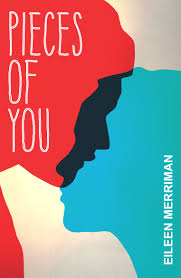
Pauline (Vaeluaga) Smith, finalist for Dawn Raid (Scholastic)
Te Haerenga – The Journey: I was taking a call in the foyer of my work building. It was Scholastic Publishing Manager, Lynette Evans, telling me that I had been nominated for a book award. There was a long pause at my end because I burst into tears and couldn’t answer. I was completely overcome with emotion and passersby were giving me looks of concern. It had been a long journey from conception to publication and I had thought the joy of launching Dawn Raid was the pinnacle.
I had started work on Dawn Raid (initially titled Overstayer) in 2015. Being a lecturer in Pacific Studies at University of Otago, Southland Campus, I became aware that students had very limited knowledge about this part of New Zealand history – if any. I talked to my students about the idea of creating a My New Zealand Story about the topic and they challenged me to complete it by the time they graduated. I only missed the mark by a year… or so.
The stars began to align. Our college librarian had just attended a conference where Scholastic Senior Editor, Penny Scown, explained they were looking for new ideas for the series. I could say the rest is history but in reality I would describe the whole experience as a series of highs and lows, alternating between my unedited happy dance and a feeling of having a brick in the pit of my stomach. I really wanted Dawn Raid to be part of the My New Zealand Story series as I love the series and I felt it fitted well. I knew this was an important story to tell and after interviewing people affected by the Dawn Raids, and the Polynesian Panthers, I wanted to show respect for their struggles and do justice to their stories.
I’ll never forget the feeling when I opened my inbox and saw an email from Scholastic. My first thought was disbelief and I think I said ‘No way’ out loud a few times before I got up the courage to open it. I was preparing myself for bad news, having heard so many stories about people having work rejected many times. Turns out it was GREAT news and the journey to publication began. As a side note, what I learnt from this was never to open emails late at night because after doing the happy dance for about an hour, I couldn’t sleep.
I pitched the idea to Scholastic and I was asked to submit the first chapter of the manuscript. I remember thinking, ‘Whoa, manuscript, that’s a bit flash.’ It was about four months before I heard anything more and I had resigned myself to rejection. Finally, there was news and it was a surreal moment when the contract arrived. Once it was signed it went straight up on the wall in a frame, in pride of position with the family photos.
After two years of researching, interviewing people, collecting information and gathering ideas about characters and events, it took three weeks during the summer holidays to pull everything together and write the book.
…it took three weeks during the summer holidays to pull everything together and write the book.
The hardest parts of the journey to publication were the waiting periods. It really was a roller-coaster ride over this time, checking emails every five minutes for any little bit of feedback, feeling elated one moment and anxious the next. Once the ball got rolling things began to happen very quickly. There was editing back and forth with content and cover designs, and the title became Dawn Raid, which the editorial staff pointed out was a closer reflection of the main focus of the story. It felt so good to have things moving.
Before the book reached publication I was contacted by a school in Rakiura Stewart Island and invited to share a workshop with their senior students about the book. I posted a photo on Facebook about my visit to the school and my brother’s reply captured my feelings about this. He said that I looked ‘lit up’ and that was exactly how I felt. Sharingmy book with the students and hearing their feedback and questions made it feel like my book was ALIVE. I am still coming to grips with the excitement and joy of being nominated for this book award.
Read our interview with Pauline about Dawn Raid here.
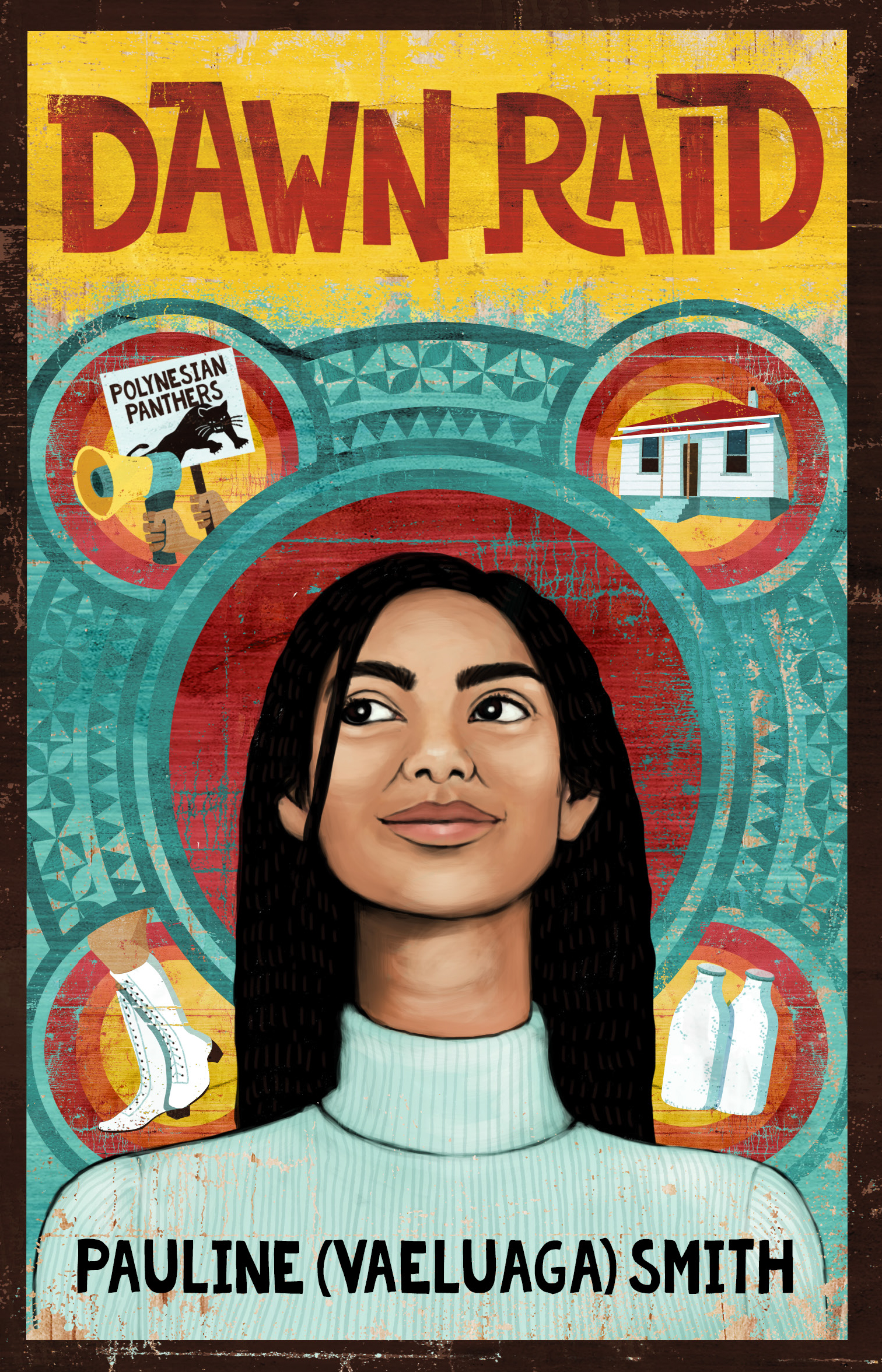
Dawn Raid (My New Zealand Story)
by Pauline (Vaeluaga) Smith
Published by Scholastic NZ
RRP $17.99
Gareth Ward, finalist for The Traitor and the Thief (Walker)
The Traitor and the Thief evolved from a single idea I had while sitting at my writing desk one January morning – wouldn’t ‘Sin’ be a really interesting name for a character.
Very soon I knew that Sin was an orphan living rough on the streets of a Steampunk Victorian Oxford and the story built from there. At the time, I was undertaking an online writing course and so as the novel progressed I would receive feedback on various scenes from a mentor. This helped me with the writing process immensely and was instrumental in developing my craft as a writer.
I managed to sneak off from our bookshop, Wardini Books, to write for about two hours every day, and over a period of about six months the novel took shape. After much re-writing and editing I gave it to two beta readers for feedback. One was fellow author Adele Broadbent and the other was Phoebe Wilton-Stuart, a (then) teenager who works in our bookshop and is an avid YA reader. Both came back with significant suggestions and so the process of re-writing started all over again.
It was now October, leading into the busiest time of the year for our bookshop, so I submitted the manuscript into a competition, the Storylines Tessa Duder award and forgot about it. The following March I was driving to the Wellington Readers and Writers festival when out of the blue I got a phone call from Storylines telling me my manuscript was a finalist and a month later it was announced as the winner.
Part of the prize was a publishing contract with Walker Books Australia and so I rather sneakily avoided the numerous rejection letters from publishers and agents, which I had endured with my previous three (unpublished) novels. The process of agreeing on the contract was pretty straightforward: Walker Books said here’s the contract and I said OK. In hindsight should I have queried it? Probably not. It was my first book, I had no track record and so had no negotiating power. Also, to be honest, I was delighted that I was going to be published and was terrified of stuffing the process up. If I were to have that time again I would certainly consider getting an agent to handle the contract negotiations for me.
The editing of my manuscript was a real eye-opener. I learned so much about my writing by going through the process and feel that I am now a much better writer for it. Walker Books did a fantastic and thorough job of ensuring the manuscript really was the very best it could be.
The editing of my manuscript was a real eye-opener. I learned so much about my writing by going through the process and feel that I am now a much better writer for it.
I had originally written my novel as the first in a series and so had deliberately left certain plot strands and character arcs unresolved. Walker said they wanted the novel as a stand-alone story, with only the possibility of a sequel, so I had to do a considerable amount of structural re-writing to tie everything up. After the structural editing, we moved onto the line editing, where the manuscript was really put through the mill. I learned much about my writing, such as I use too many colours in my descriptions and I have certain ‘weed words’ that I over use, amongst numerous other bad habits which needed to be addressed.
It would be fair to say that at times I found the editing process quite traumatic. There were certain suggestions made by my editor on which I disagreed but felt obliged to comply with. In retrospect, I now believe the majority of these suggestions were correct, and I think as a new author you have to trust the experience of your editor.
Walker wanted the title of the book changed and after much back and forth with my editor we decided upon The Traitor and the Thief. I had no input into the design of the book cover, but I was delighted with what Walker came up with.
I wanted to do something special for the book launch and as the story has a Victorian Steampunk feel to it we decided upon a Steampunk Ball. We titled this ‘The Traitor’s Ball’ and had over 250 local book lovers and Steampunks from further afield attend what turned out to be a truly wonderful evening.
Since the launch The Traitor and the Thief has had wonderful reviews, won a Storylines Notable Book Award, won two Sir Julius Vogel Awards and now the icing on the cake is that it has been nominated in two categories in the NZ Children and Y/A Book Awards. It really has been a rip-roaring adventure and the journey is set to continue with a sequel hopefully hitting the shelves next year.
Read our interview with Gareth about The Traitor and the Thief here.
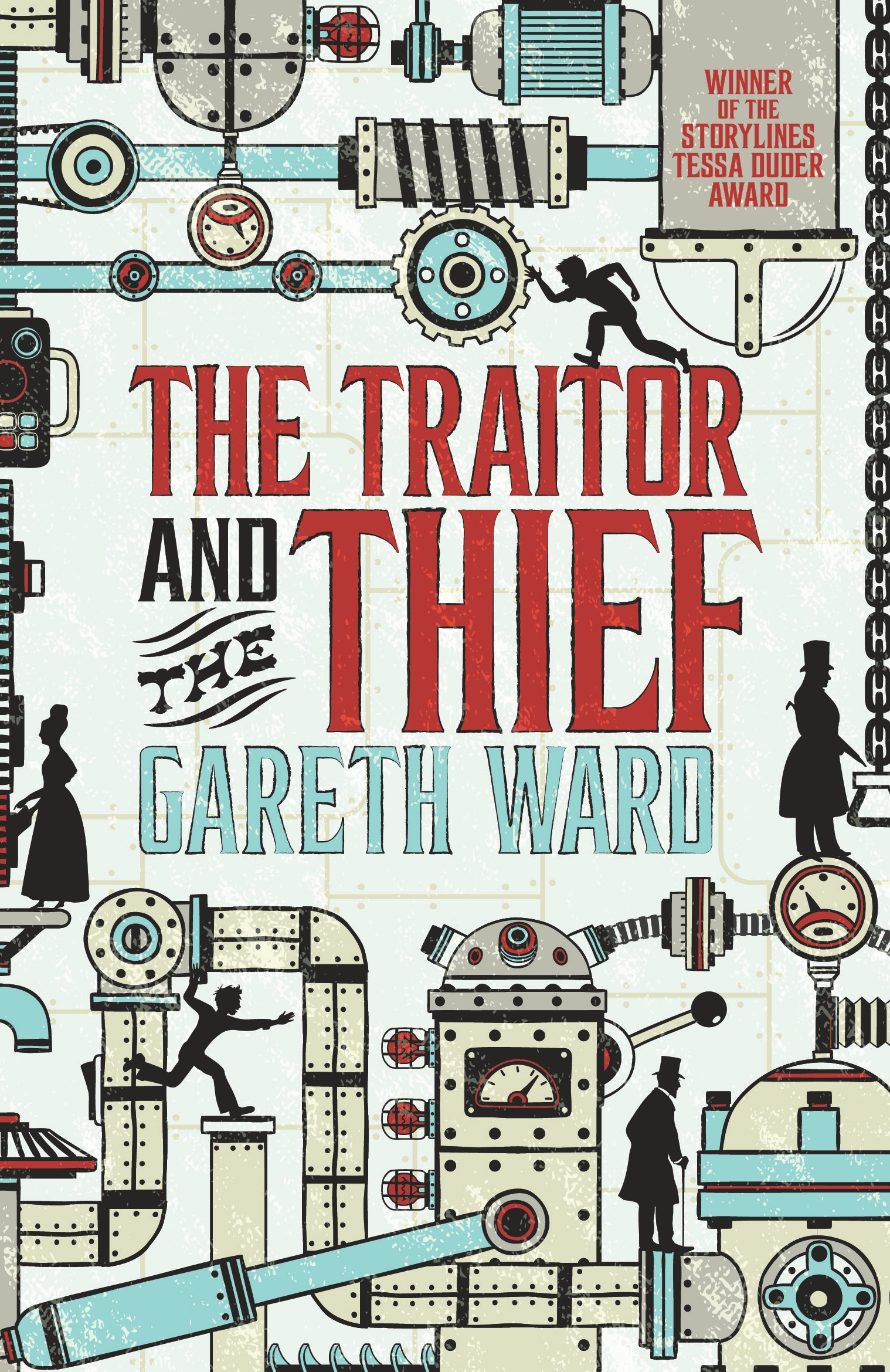
Joanna Grochowicz, finalist for Into the White – Scott’s Antarctic Odyssey (Allen & Unwin)
Publication is merely the beginning. In the past 12 months I’ve spoken at festivals in New Zealand and the UK, been interviewed on radio and television, participated in the Antarctic Season Opening, visited the Scott Polar Research Institute in Cambridge, toured the West Coast with Duffy Books, made over 100 school visits and shared Captain Scott’s story with over 10,000 students here and abroad. In September I return to England for my second schools tour and to speak at Earl Spencer’s Althorp Literary Festival. It has been tremendous fun. But none of it has happened on its own. I’ve pursued every opportunity and made it happen. While stamina helps, a bottomless well of enthusiasm is indispensable!
It was a long road. I’d been working as a ghost writer for 10 years before I applied for the Masters of Creative Writing at Auckland University in 2008. I was fortunate to have Witi Ihimaera as my mentor and Emily Perkins as a tutor but what was of greatest value was the self-discipline needed to write an 80,000 word manuscript start to finish.
Into the White – Scott’s Antarctic Odyssey came about when I tried to find a version of Scott’s diaries to read to my children. Having read the diaries myself, I was struck by the gripping nature of the story which had all the elements of a great adventure – storms at sea, impenetrable sea ice, memorable characters, man-eating whales, vicious dogs, unruly ponies, crevasses, blizzards, scientific discovery and scientific failure, unpalatable food, extreme temperatures, and equal measures of hunger, agony and pathos. And yet nobody had written about it in a form that was appropriate for children.
The research took me six months to complete and the manuscript, another nine. Finding time to write while meeting work commitments is one of the great advantages of running my own business. Before finishing I put together a detailed proposal and some sample chapters to share with publishers. At this point I came across the work of UK graphic novelist Sarah Lippett and asked if I could include some of her drawings in my proposal. Allen & Unwin were the first and only publishers I approached and I eventually signed on with their children’s publishing group in Australia. Working with my publisher, Erica Wagner, and my editor, Kate Whitfield in Melbourne was an education in itself. There is no substitute for decades of experience.
The editing process went very smoothly. First came the structural edit. After spending so long with a manuscript, I really valued having a trusted person really scrutinize it line by line. Kate’s suggestions were at once hard-hitting and insightful. Prospective authors beware: prepare to scrap all those beloved sections you labored over that ultimately lend nothing of value to the story.
Prospective authors beware: prepare to scrap all those beloved sections you labored over that ultimately lend nothing of value to the story.
Next came the copy edit. Another chance to justify every word’s position on the page. And when all was said and done, it took a professional proof reader to demonstrate how blind I had become to typos.
Working with Kate and Erica on sourcing Herbert Ponting’s photos and commissioning maps and drawings was a pure pleasure. Sarah Lippett had just had her first graphic novel published in the UK with Jonathan Cape to rave reviews in The Guardian so we were really fortunate she could work on our book too. When Kate presented the cover concept with Sarah’s artwork – I was overjoyed – it was everything I had hoped, only much better.
Having a great story is a really good start. However I believe a book concept has the best chance of success with publishers when the author can demonstrate a firm understanding of where their work will sit in the market and can communicate a compelling vision around its marketing and promotion. Signing a contract is really entering into a partnership with your publisher. All of the robust thinking you’ve put into marketing the book will eventually need to be put into practice. Allen & Unwin has a fabulous publicity team working on my behalf but I never expected the publisher to do everything for me. They publish a huge number of books every year and simply don’t have the bandwidth to pursue every possible angle for promotion of your particular book. This is when your energy and enthusiasm as an author really comes to the fore. This is also a great way to highlight your value to a publisher. When I presented my follow-up book to Allen & Unwin, they could be confident of my commitment. I’m thrilled to say Amundsen’s Way comes out in May 2019.
Being nominated for the New Zealand Book Awards for Children and Young Adults has provided an incredible boost. Working so diligently on one thing for so long, can be exhausting. This recognition means it has all been worth it. Ultimately only one thing matters: the reader.
Read our review of Into the White here.
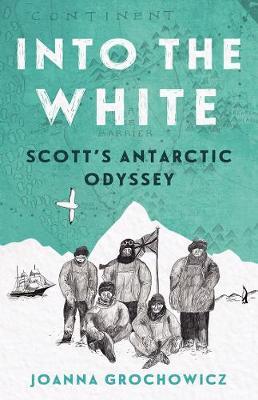
into the white: Scott’s antarctic odyssey
by Joanna Grochowicz
Published by Allen & Unwin
RRP $19.00
Erin Donohue, finalist for Because Everything is Right but Everything is Wrong
I wrote my first novel while on the Creative Writing programme at Whitireia. Before the course began, I was stuck. There was no story. Just a vague idea: mental health. I arrived at the first day of my second year with no plan. I remember being asked what the story was about and answering, ‘Mental health’. ‘So, what happens?’ they would say. And I didn’t have an answer.
Regardless of how ready we were, we had to start writing; there were deadlines to meet. I wrote the dreary days my character’s mental illness offered him. I was determined to make the main story about mental health. Not a side story or side character, but the main plot and the main character’s struggle. I wanted it to be like my experience of mental illness. It had to be the only story.
Workshopping was a constant on the writing course. Giving and receiving feedback was a requirement and something that, after the first few itchy weeks, we grew to be thankful for. I received feedback about my need to find a balance between being honest about the reality of living with depression and making sure the reader wasn’t dragged down too. The story needed more push and more light. After further workshopping and discussions with my army of readers, I found something that could bring a balance, of sorts, to the book. Casey Stevens. She was a character who was always there but took a while to fully reveal to me what she could become. She offered a lightness I hadn’t been able to find anywhere else, an intrigue and a drive.
Somehow, in the haze of ideas and late-night scribblings, a full manuscript emerged – earlier than I expected it to. And somehow it emerged fully formed. I was in hospital on bed rest for anorexia and spent some of my time there reading and rereading, editing and rewriting, changing words that didn’t need to be changed. Eventually I had to send it to my class for a final workshop. I remember laying back on my hospital bed and thinking, ‘I’ve done it – I’ve written a whole book.’
I remember laying back on my hospital bed and thinking ‘I’ve done it – I’ve written a whole book.’
In a rushing few months, I workshopped and submitted my manuscript. It was marked and returned to me. I had good feedback, and good, knowledgeable people told me this manuscript was something. I was 19 years old, with a good manuscript and not much knowledge of what I should do with it. What I did know, though, was that the creative writing programme was the best place to write a first book. With the feedback, the process, the guidance and the time I had to dedicate to it, it gave me the chance to try and fail and try again.
I spent a lot of time talking with my incredible tutor, and now mentor, Anna Taylor about what to do. After one meeting in the early months of the next year, she suggested I look up the Text Prize, a competition in which the winner has their manuscript published. I discovered it closed in less than a week. No time to read or edit; enough time for my printed manuscript to get to Text in Melbourne. Unsurprisingly, they received around 300 manuscripts, and also unsurprisingly, nothing came of my submission. The haste with which I had sent it off and the mere size of the competition meant I wasn’t expecting much. I wasn’t disappointed or regretful – I was ready to try something new.
It was around this time I was approached by Adrienne Jansen, a creative writing tutor and publisher at Escalator Press. She had heard about my book. She wanted the Escalator reading group to read it. And then eventually, she wanted to publish it.
The publishing process started at the beginning of 2017, with a publication date of early October. Though the process was busy and hectic and hard, it was also funny and warm and good. Ruby, Gemma, Helena, Sucheta, Hayley and Elle worked hard on my book. They knew how close it was to me and how anxious I was to have it out in the world and they treated it with care. They were as excited as me and as tearful as me. They were, at times, more invested than me. Their hard work and gentle hearts made this story what it is in ways that I couldn’t have.
The book snuck out into the world a few days before my launch. The launch was emotional; friends, family and strangers cried. It was a celebration of my achievements and the story of my mental health. It was a time of pride and reflection. Of what almost wasn’t possible. And it made my heart sing.
Since then, the book and I have done a lot together. We’ve been to the Nelson Readers and Writers Festival and the Auckland Writers Festival. We’ve been on radio and online and in book stores across New Zealand. And now we’ve been shortlisted for the 2018 NZ Children’s and Young Adults Book Awards. What an honour! I feel proud to represent the community that can come from our struggles and from the success that can happen despite, or maybe because of, mental illness.
Read our review of Because Everything is Right but Everything is Wrong here.
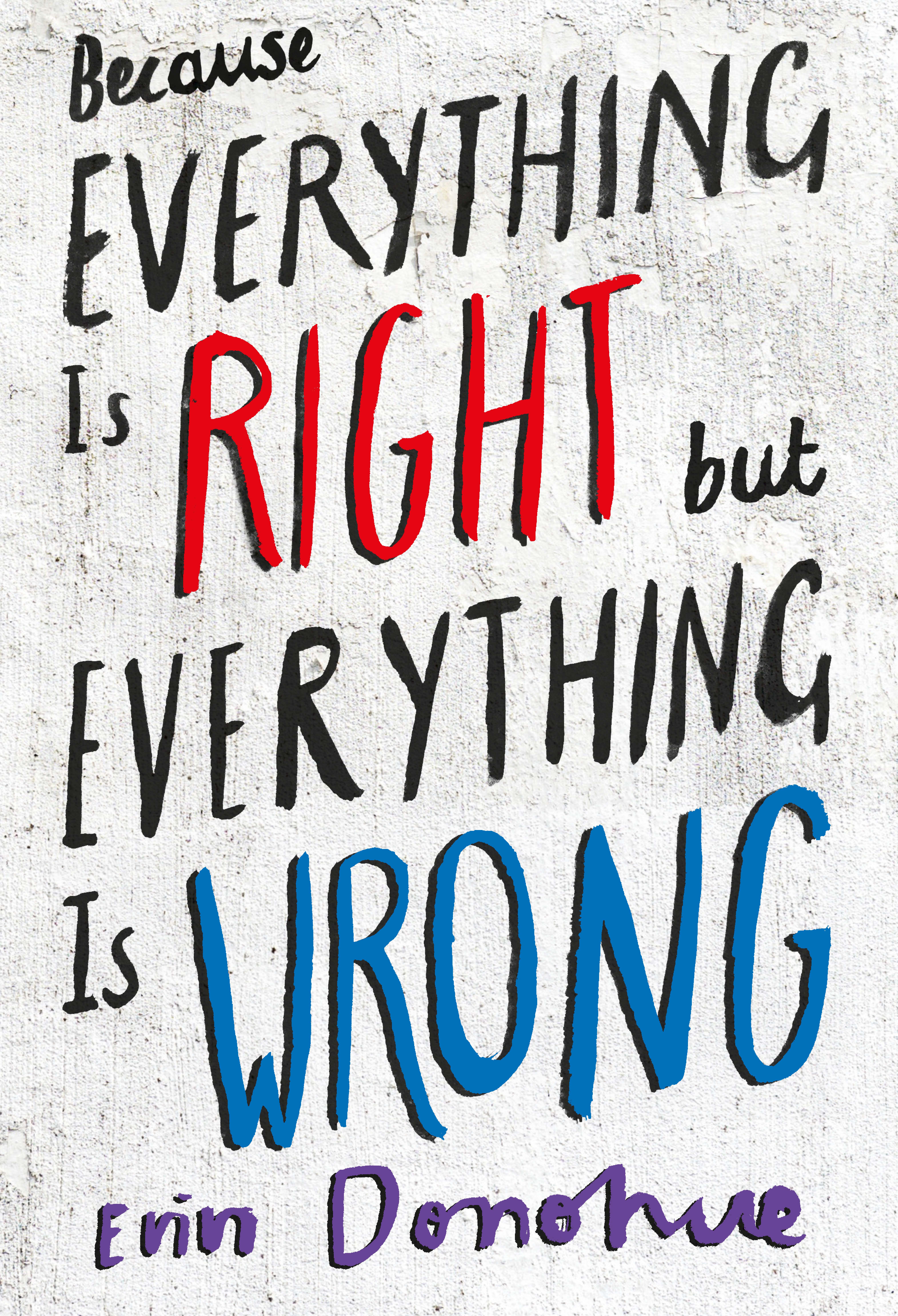
Because Everything is right but everything is wrong
By Erin Donohue
Published by Escalator Press
RRP: $24.99



